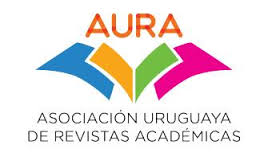CONECTIVIDAD Y DIVERSIDAD
DOI:
https://doi.org/10.26462/34.1.22Palabras clave:
paisaje, dispersión, diversidad, grafosResumen
Uno de los mayores cambios de la Ecología contemporánea, es el reconocimiento del flujo de individuos entre comunidades como determinante principal de su estructura local. Este flujo depende de la estructura espacial del paisaje y de la capacidad de dispersión de las especies involucradas. Notablemente, cuando la estructura del paisaje es considerada, resulta ser de igual o de mayor importancia comparado con los clásicos determinantes locales como área, heterogeneidad o productividad. En el presente ensayo, nos enfocamos en presentar el rol de la configuración del paisaje y la capacidad de dispersión de los organismos sobre los patrones de biodiversidad, haciendo especial énfasis en las líneas desarrolladas por las autoras.
Descargas
Citas
Ai, D., Gravel, D., Chu, C., & Wang, G. (2013). Spatial structures of the environment and of dispersal impact species distribution in competitive metacommunities. PloS one, 8(7), e68927.
Álvarez-Romero, J.G., Munguía-Vega, A., Beger, M., del Mar Mancha-Cisneros, M., Suárez-Castillo, A.N., Gurney, G.G., … & Reyes-Bonilla, H. (2018). Designing connected marine reserves in the face of global warming. Global Change Biology, 24(2), e671-e691.
Anderson, E.P., Jenkins, C.N., Heilpern, S., Maldonado-Ocampo, J.A., Carvajal-Vallejos, F.M., Encalada, A.C., … & Tedesco, P.A. (2018). Fragmentation of Andes-to-Amazon connectivity by hydropower dams. Science advances, 4(1), eaao1642.
Arim, M., Borthagaray, A.I., & Giacomini, H.C. (2016). Energetic constraints to food chain length in a metacommunity framework. Canadian Journal of Fisheries and Aquatic Science, 73, 1-18. https://doi.org/10.1139/cjfas-2015-0156
Arim, M., Pinelli, V., Rodríguez-Tricot, L., Ortiz, E., Illarze, M., Fagúndez-Pachón, C., & Borthagaray, A.I. (2023). Chance and necessity in the assembly of plant communities: Stochasticity increases with size, isolation and diversity of temporary ponds. Journal of Ecology, 111(8), 1641-1655.
Barnett, K., & Belote, R.T. (2021). Modeling an aspirational connected network of protected areas across North America. Ecological Applications, n/a(n/a), e2387.
Bauer, B., Kleyer, M., Albach, D.C., Blasius, B., Brose, U., Ferreira-Arruda, T., … & Hillebrand, H. (2021). Functional trait dimensions of trophic metacommunities. Ecography, 44(10), 1486-1500.
Borthagaray, A.I., Arim, M., & Marquet, P.A. (2012). Connecting landscape structure and patterns in body size distributions. Oikos, 121(5), 697-710.
Borthagaray, A.I., Barreneche, J.M., Abades, S., & Arim, M. (2014). Modularity along organism dispersal gradients challenges a prevailing view of abrupt transitions in animal landscape perception. Ecography, 37(6), 564-571.
Borthagaray, A.I., Berazategui, M., & Arim, M. (2015a). Disentangling the effects of local and regional processes on biodiversity patterns through taxon-contingent metacommunity network analysis. Oikos, 124(10), 1383-1390.
Borthagaray, A.I., Pinelli, V., Berazategui, M., Rodríguez-Tricott, L., & Arim, M. (2015b). Effects of metacommunity network on local communities structure: from theoretical predictions to empirical evaluations. In A. Belgrano, G. Woodward, y U. Jacob (Eds.), Aquatic Functional Biodiversity. Elseiver.
Borthagaray, A.I., Teixeira-de Mello, F., Tesitore, G., Ortiz, E., Illarze, M., Pinelli, V., … & Arim, M. (2020). Community isolation drives lower fish biomass and species richness, but higher functional evenness, in a river metacommunity. Freshwater Biology, 65(12), 2081-2095.
Borthagaray, A., Cunillera-Montcusí, D., Bou, J., Biggs, J., & Arim, M. (2023a). Pondscape or waterscape? The effect on the diversity of dispersal along different freshwater ecosystems. Hydrobiologia, 850.
Borthagaray, A.I., Cunillera-Montcusí, D., Bou, J., Tornero, I., Boix, D., Anton-Pardo, M., … & Arim, M. (2023b). Heterogeneity in the isolation of patches may be essential for the action of metacommunity mechanisms. Frontiers in Ecology and Evolution, 11.
Brose, U., Ostling, A., Harrison, K., & Martinez, N.D. (2004). Unified spatial scaling of species and their trophic interactions. Nature, 428, 167-171.
Brown, B.L., & Swan, C.M. (2010). Dendritic network structure constrains metacommunity properties in riverine ecosystems. Journal of Animal Ecology, 79, 571-580.
Brown, J.H., & Kodric-Brown, A. (1977). Turnover rates in insular biogeography: effect of immigration on extinction. Ecology, 58, 445-449.
Brown, J.H. (2014). Why are there so many species in the tropics? Journal of Biogeography, 41(1), 8-22.
Cañedo-Argüelles, M., Boersma, K.S., Bogan, M.T., Olden, J.D., Phillipsen, I., Schriever, T.A., & Lytle, D.A. (2015). Dispersal strength determines meta-com- munity structure in a dendritic riverine network. Journal of Biogeography, 42(4), 778-790.
Carroll, C., Parks, S.A., Dobrowski, S.Z., & Roberts, D.R. (2018). Climatic, topographic, and anthropogenic factors determine connectivity between current and future climate analogs in North America. Global Change Biology, 24(11), 5318-5331.
Castillo-Escrivà, A., Aguilar-Alberola, J.A., & Mesquita-Joanes, F. (2017). Spatial and environmental effects on a rock-pool metacommunity depend on landscape setting and dispersal mode. Freshwater Biology, 62(6), 1004-1011.
Chase, J.M., & Shulman, R.S. (2009). Wetland isolation facilitates larval mosquito density through the reduction of predators. Ecological Entomology, 34(6), 741-747.
Chase, J.M. (2010). Stochastic community assembly causes higher biodiversity in more productive environments. Science, 328(5984), 1388-1391.
Chase, J.M., Burgett, A.A., & Biro, E.G. (2010). Habitat isolation moderates the strength of top‐down control in experimental pond food webs. Ecology, 91(3), 637-643.
Chase, J.M., Jeliazkov, A., Ladouceur, E., & Viana, D.S. (2020). Biodiversity conservation through the lens of metacommunity ecology. Annals of the New York Academy of Sciences, 1469(1), 86-104.
Cunillera-Montcusí, D., Borthagaray, A.I., Boix, D., Gascón, E., Sala, J., Tornero, I., … & Arim, M. (2021). Metacommunity network structure determines nonlinear transition in biodiversity resilience to wildfire. Ecography, 44, 1022-1034.
Cunillera-Montcusí, D., Bou, J., Mehner, T., Brucet, S., Arim, M., & Borthagaray, A.I. (2023). The European freshwater landscape and hotspot areas of mass effects and regional connectivity. Diversity and Distributions, 29(8), 997-1008.
Dale, M.R.T., & Fortin, M.-J. (2010). From graphs to spatial graphs. Annual Review of Ecology Evolution and Systematics, 41, 21-38.
Datry, T., Bonada, N., & Heino, J. (2016). Towards understanding the organisation of metacommunities in highly dynamic ecological systems. Oikos, 125(2), 149-159.
De Bie, T., De Meester, L., Brendonck, L., Martens, K., Goddeeris, B., Ercken, D., … & Declerc, S. A. J. (2012). Body size and dispersal mode as key traits determining metacommunity structure of aquatic organisms. Ecology Letters, 15, 740-747.
Dinerstein, E., Vynne, C., Sala, E., Joshi, A.R., Fernando, S., Lovejo y, T.E., … & Wikramanayake, E. (2019). A Global Deal For Nature: Guiding principles, milestones, and targets. Science Advances, 5(4), eaaw2869.
Economo, E.P., & Keitt, T.H. (2008). Species diversity in neutral metacommunities: a network approach. Ecology Letters, 11, 52-62.
Economo, E.P., & Keitt, T.H. (2010). Network isolation and local diversity in neutral metacommunities. Oikos, 119, 1355-1363.
Enquist, B.J., Norberg, J., Bonser, S.P., Violle, C., Webb, C.T., Henderson, A., … & Savage, V.M. (2015). Scaling from traits to ecosystems: developing a general trait driver theory via integrating trait-based and metabolic scaling theories. Advances in Ecological Research, 52, 249-318.
Estrada, E., & Bodin, Ö. (2008). Using network centrality measures to manage landscape connectivity. Ecology 18: 1810-1825. Ecological Applications, 18(7), 1818-1825.
Fisher, C.K., & Mehta, P. (2014). The transition between the niche and neutral regimes in ecology. Proceedings of the National Academy of Sciences, 111(36), 13111-13116.
Fortin, M.J., Dale, M.R.T., & Brimacombe, C. (2021). Network ecology in dynamic landscapes. Proceedings of the Royal Society B: Biological Sciences, 288(1949), 20201889.
Fortuna, M.A., & Bascompte, J. (2006). Habitat loss and the structure of plant-animal mutualistic networks. Ecology Letters, 9, 281-286.
Fukami, T. (2015). Historical contingency in community assembly: integrating niches, species pools, and priority effects. Annual Review of Ecology, Evolution, and Systematics, 46, 1-23.
Game, E.T., Lipsett-Moore, G., Saxon, E., Peterson, N., & Sheppard, S. (2011). Incorporating climate change adaptation into national conservation assessments. Global Change Biology, 17(10), 3150-3160.
Gonzalez, A., Thompson, P., & Loreau, M. (2017). Spatial ecological networks: planning for sustainability in the long-term. Current opinion in environmental sustainability, 29, 187-197.
Grainger, T.N., & Gilbert, B. (2016). Dispersal and diversity in experimental metacommunities: linking theory and practice. Oikos, 125(9), 1213-1223.
Haddad, N.M., Hudgens, B., Damschen, E., Levey, D., Orrock, J., Tewksbury, J. J., & Weldon, A. J. (2011). Assessing positive and negative ecological effects of corridors. Sources, Sinks and Sustainability, 475-504.
Haddad, N.M., Brudvig, L., Damschen, E., Evans, D., Johnson, B., Levey, D., … & Weldon, A. (2014). Potential Negative Ecological Effects of Corridors. Conservation biology: the journal of the Society for Conservation Biology, 28.
Haddad, N.M., Brudvig, L.A., Clobert, J., Davies, K.F., Gonzalez, A., Holt, R., … & Townshend, J.R. (2015). Habitat fragmentation and its lasting impact on Earth's ecosystems. Sci. Adv., 1, e1500052.
Hanski, I. (1999). Metapopulation Ecology. Oxford University Press.
Harvey, E., Gounand, I., Ward, C.L., & Altermatt, F. (2017). Bridging ecology and conservation: from ecological networks to ecosystem function. Journal of Applied Ecology, 54(2), 371-379.
Hill, M.J., Heino, J., Thornhill, I., Ryves, D.B., & Wood, P.J. (2017). Effects of dispersal mode on the environmental and spatial correlates of nestedness and species turnover in pond communities. Oikos, 126(11), 1575-1585.
Hillebrand, H., Blasius, B., Borer, E.T., Chase, J.M., Downing, J.A., Eriksson, B.K., … & Ryabov, A.B. (2018). Biodiversity change is uncoupled from species richness trends: Consequences for conservation and monitoring. Journal of Applied Ecology, 55(1), 169-184.
Holt, R.D. (1993). Ecology at the mesoscale: the influence of regional processes on local communities. In R.E. Ricklefs y D. Schluter (Eds.), Species diversity in Ecological Communities: historical and geographical perspectives (pp. 77-88). University of Chicago Press.
Hubbell, S.P. (2001). A unified theory of biodiversity and biogeography. Princeton University Press.
Illarze, M., Arim, M., Ramos-Jiliberto, R., & Borthagaray, A.I. (2024). Community connectivity and local heterogeneity explain animal species co-occurrences within pond communities. Journal of Animal Ecology, 93(8), 1123-1134.
Jones, N.T., Germain, R.M., Grainger, T.N., Hall, A.M., Baldwin, L., & Gilbert, B. (2015). Dispersal mode mediates the effect of patch size and patch connectivity on metacommunity diversity. Journal of Ecology, 103(4), 935-944.
Jordán, F., Okey, T.A., Bauer, B., & Libralato, S. (2008). Identifying important species: Linking structure and function in ecological networks. Ecological Modelling, 216, 75-80.
Keitt, T.H., Urban, D.L., & Milne, B.T. (1997). Detecting critical scales in fragmented landscapes. Conservation Ecology. Conservation Ecology, 1(1), 4.
Krosby, M., Breckheimer, I., John Pierce, D., Singleton, P.H., Hall, S.A., Halupka, … & Schuett-Hames, J.P. (2015). Focal species and landscape “naturalness” corridor models offer complementary approaches for connectivity conservation planning. Landscape Ecology, 30(10), 2121-2132.
Lawton, J.H. (1999). Are there general laws in ecology? Oikos, 84, 177-192.
Leibold, M.A., Holyoak, M., Mouquet, N., Amarasekare, P., Chase, J.M., Hoopes, M.F., … & Gonzalez, A. (2004). The metacommunity concept: a framework for multi-scale community ecology. Ecology Letters, 7, 601-613.
Leibold, M.A., & Chase, J.M. (2018). Metacommunity Ecology. Princeton University Press.
Leibold, M.A., Urban, M.C., De Meester, L., Klausmeier, C.A., & Vanoverbeke, J. (2019). Regional neutrality evolves through local adaptive niche evolution. Proceedings of the National Academy of Sciences, 201808615.
Levins, R. (1969). Some demographic and genetic consequences of environemntal heterogeneity for biological control. Bulletin of the Entomological Society of America, 15, 237-240.
Li, D., Clements, C.F., Shan, I.L.G., & Memmott, J. (2021). Corridor quality affects net movement, size of dispersers, and population growth in experimental microcosms. Oecologia, 195(2), 547-556.
Loke, L.H.L., & Chisholm, R.A. (2022). Measuring habitat complexity and spatial heterogeneity in ecology. Ecology Letters, 25(10), 2269-2288.
Loreau, M., & Mouquet, N. (1999). Immigration and the maintenance of local species diversity. The American Naturalist, 154(4), 427-440.
MacArthur, R.H., & Wilson, E.O. (1967). The Theory of Island Biogeography. Princeton University Press, Princeton.
Mai, P., Marchesi, E., Pollero, A., Zabaleta, M., Cappuccio, L., Fernández, S., Idjiloff, N., & Arim, M. (2024). Unraveling local and regional determinants of high plant diversity at marine rocky outcrops in Uruguay. Journal of Vegetation Science, 35. https://doi.org/10.1111/jvs.13284
McCann, K.S. (2012). Food Webs (Vol. 50). Princeton University Press.
Mougi, A., & Kondoh, M. (2016). Food-web complexity, meta-community complexity and community stability. Scientific Reports, 6. Mouquet, N., & Loreau, M. (2002). Coexistence in metacommunities: the regional similarity hypothesis. The American Naturalist, 159(4), 420-426.
Mouquet, N., & Loreau, M. (2003). Community patterns in source-sink metacommunities. The American
Naturalist, 162(5), 544-557.
Muneepeerakul, R., Bertuzzo, E., Lynch, H.J., Fagan, W.F., Rinaldo, A., & Rodriguez-Iturbe, I. (2008). Neutral metacommunity models predict fish diversity patterns in Mississippi–Missouri basin. Nature, 453(7192), 220.
Orrock, J.L., & Watling, J.I. (2010). Local community size mediates ecological drift and competition in metacommunities. Proceedings of the Royal Society B: Biological Sciences, 277(1691), 2185-2191.
Phillipsen, I.C., & Lytle, D.A. (2013). Aquatic insects in a sea of desert: population genetic structure is shaped by limited dispersal in a naturally fragmented landscape. Ecography, 36(6), 731-743.
Pillai, P., Gonzalez, A., & Loreau, M. (2012). Metacommunity theory explains the emergence of food web complexity. Proceedings of the National Academy of Sciences (USA), 108(48), 19293-19298.
Rayfield, B., Baines, C.B., Gilarranz, L.J., & Gonzalez, A. (2023). Spread of networked populations is determined by the interplay between dispersal behavior and habitat configuration. Proceedings of the National Academy of Sciences, 120(11), e2201553120.
Ricklefs, R.E. (1987). Community Diversity: Relative Roles of Local and Regional Processes. Science, 235(4785), 167-171.
Ricklefs, R.E., & Schluter, D. (1993). Species diversity in ecological communities: historical and geographical perspectives. University of Chicago Press.
Ritchie, M.E. (2010). Scale, heteogeneity, and the structure and diveristy of ecological communities (Vol. 45). Princeton University Press.
Rodriguez-Tricot, L., & Arim, M. (2019). From Hutchinsonian ratios to spatial scaling theory: the interplay among limiting similarity, body size, and landscape structure. Ecography.
Ryser, R., Hirt, M.R., Häussler, J., Gravel, D., & Brose, U. (2021). Landscape heterogeneity buffers biodiversity of simulated meta-food-webs under global change through rescue and drainage effects. Nature Communications, 12(1), 4716-4716.
Ryser, R., Chase, J.M., Gauzens, B., Häussler, J., Hirt, M.R., Rosenbaum, B., & Brose, U. (2024). Landscape configuration can flip species–area relationships in dynamic meta-food-webs. Philosophical Transactions of the Royal Society B: Biological Sciences, 379(1907), 20230138.
Sarremejane, R., Mykrä, H., Bonada, N., Aroviita, J., & Muotka, T. (2017). Habitat connectivity and dispersal ability drive the assembly mechanisms of macroinvertebrate communities in river networks. Freshwater Biology, 62(6), 1073-1082.
Saura, S., Bertzky, B., Bastin, L., Battistella, L., Mandrici, A., & Dubois, G. (2018). Protected area connectivity: Shortfalls in global targets and country-level priorities. Biological Conservation, 219, 53-67.
Savary, P., Lessard, J.P., & Peres-Neto, P.R. (2024). Heterogeneous dispersal networks to improve biodiversity science. Trends in Ecology y Evolution, 39(3), 229-238.
Scheffer, M., Van Geest, G.J., Zimmer, K., Jeppesen, E., Søndergaard, M., Butler, M.G., … & De Meester, L. (2006). Small habitat size and isolation can promote species richness: second‐order effects on biodiversity in shallow lakes and ponds. Oikos, 112(1), 227-231.
Schoener, T.W. (1989). Food webs from the small to the large. Ecology, 70, 1559-1589. Shipley, B. (2010). Community assembly, natural selection and maximum entropy models. Oikos, 119, 604-609.
Shipley, B. (2014). Measuring and interpreting traitbased selection versus meta-community effects during local community assembly. Journal of Vegetation Science, 25, 55-65.
Shmida, A., & Wilson, M.V. (1985). Biological determinants of species diversity. Journal of
Biogeography, 12, 1-20.
Siqueira, T., Saito, V.S., Bini, L.M., Melo, A.S., Petsch, D.K., Landeiro, V.L., … & Heino, J. (2019). Community size affects the signals of selection and ecological drift on biodiversity. 515098, 515098.
Storch, D. (2012). Biodiversity and its energetic and thermal controls. In R.M. Sibly, J.H. Brown, & A. Kodric-Brown (Eds.), Metabolic ecology: a scaling approach. Wiley-Blackwell.
Storch, D., Bohdalková, E., & Okie, J. (2018). The more-individuals hypothesis revisited: the role of community abundance in species richness regulation and the productivity–diversity relationship. Ecology Letters, 21(6), 920-937.
Suzuki, Y., & Economo, E.P. (2021). From species sorting to mass effects: spatial network structure mediates the shift between metacommunity archetypes. Ecography, 44(5), 715-726.
Thompson, P.L., Guzman, L.M., De Meester, L., Horváth, Z., Ptacnik, R., Vanschoenwinkel, B., … & Chase, J.M. (2020). A process-based metacommunity framework linking local and regional scale community ecology. Ecology Letters, 23(9), 1314-1329.
Tornero, I., Boix, D., Bagella, S., Pinto-Cruz, C., Caria, M.C., Belo, A., Lumbreras, A., … & Gascón, S. (2018). Dispersal mode and spatial extent influence distance-decay patterns in pond metacommunities. PloS one, 13(8), e0203119.
Urban, D., & Keitt, T.H. (2001). Landscape connectivity: a graph-theoretic perspective. Ecology, 82(5), 1205-1218.
Vellend, M. (2010). Conceptual synthesis in community ecology. The Quarterly Review of Biology, 85(2), 183-206.
Vellend, M. (2016). The theory of ecological communities (Vol. 57). Princeton University Press.
Weiher, E., & Keddy, P.A. (1999). Ecological assembly rules: perspectives, advances, retreats. Cambridge University Press.
Wood, S.L.R., Martins, K.T., Dumais-Lalonde, V., Tanguy, O., Maure, F., St-Denis, A., … & Gonzalez, A. (2022). Missing Interactions: The Current State of Multispecies Connectivity Analysis [Review]. Frontiers in Ecology and Evolution, 10.
Wright, D.H. (1983). Species-Energy Theory: An Extension of Species-Area Theory. Oikos, 41(3), 496-506.











